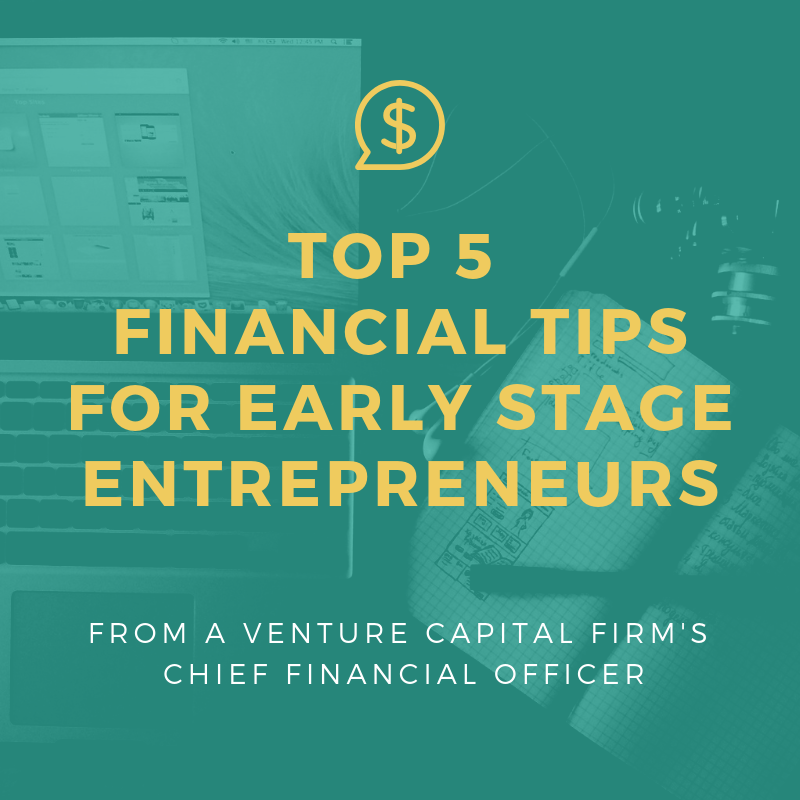This article is contributed by Brent Campbell, Chief Financial Officer of Briovation- the parent company of Jumpstart Foundry (seed-stage fund) and Jumpstart Capital (growth fund).
Financial Presentation Tips for Early Stage Entrepreneurs

I’ve enjoyed a 30+ year business career that includes stints as a CPA, tax director of a Fortune 500 company, CFO for a large private company and CFO/CEO for numerous start-ups. I’ve presented investment opportunities to VC’s from Boston to LA. I’ve been told no by almost all of them (too small, too large, too early, too late). Along the way I have enjoyed a few successful exits and a few more that were either terrible ideas or terribly executed-or both!
As the current CFO for Jumpstart Foundry and financial advisor to some of its portfolio companies, I’ve now sat on both sides of the table as a start-up entrepreneur seeking funding and a VC evaluating investment opportunities.
Here are five tips to help you avoid some of the financial mistakes made by entrepreneurs positioning their companies for future rounds of funding.
1. Build a Realistic and Credible Financial Plan
I often see very impressive business plans and executive summaries. Entrepreneurs usually succeed at articulating a compelling story that captures the uniqueness and size of the opportunity. They often fall short of following that narrative with a realistic and credible financial plan.
2. Develop a Five Year Monthly Financial Projection
While no investor believes you possess the proverbial crystal ball, it is important to think through the critical early stages of your business and layout a financial forecast that shows your understanding of the phases of growth and the financial resources needed to execute your plan. A five year monthly financial plan allows you the opportunity to demonstrate your understanding of this process and a realistic timeframe for launching and nurturing the business after launch.
3. Include Income Statement, Balance Sheet and Statement of Cash Flow
I’ve seen numerous financial plans that include an income statement only. The most critical part of the plan is the cash flow and in most cases that can’t be determined from an income statement alone. Forecasting the balance sheet will reveal a thorough understanding of critical investments needed in inventory and capital assets like furniture, equipment, product development, intellectual property, platform development, etc. Of course, accounts receivable and accounts payable may play a role in the funding needs of your company, so properly forecasting those is crucial.
If the proper work is done forecasting the income statement and balance sheet, an accurate statement of cash flow is simply an exercise in mathematics. It will show your cash burn and needs in an easy to understand and familiar format for potential investors.
An easy to digest format allows potential investors to focus on the narrative rather than searching for hard to find answers in your financial presentation. Most of the time that results in lost credibility which will end most opportunities.
4. Update for Actual Results and Changes in Forecast Assumptions
Building the financial plan requires a lot of work. Once completed keep it updated with current monthly results and changes to forecast assumptions so that it can be provided with confidence to potential investors on short notice. This will also keep you informed and conversant about your financials, enabling a deeper understanding of your business.
5. Be Real
It is easy to let the tail wag the dog and prepare financial projections built to impress potential investors. Most of the time it results in lost credibility and therefore lost investors. If not, it leads to elevated expectations that can lead to investor disappointment over missed forecasts. That usually leads to a domino effect of bad decisions that negatively impact the long-term opportunity rather than healthy decisions based on accurate information and strategic foresight.
I learned the hard way that for most business plans it takes twice as long and costs twice as much as I anticipated. You are probably not going to capture market share as quickly as you think. Your marketing budget is going to require more funds to win that market share. Building in the REAL costs of executing your plan with realistic expectations of customer acquisition and scale will best serve you and your ultimate stakeholders’ long term.



